
To the plot on which this fresco was created, Botticelli turned first of the Renaissance artists. The events depicted here are described in the Old Testament book of Numbers and describe how the “chiefs of society”, the two hundred and fifty famous husbands chaired by Korah, Dathan and Aviron. decided to ask Moses, who freed them at the command of God from Egyptian slavery, why he and his brother Aaron are placed above all the people of Israel.
In the center of the composition, the artist depicted how the rebels were punished by God for their insolence – the censers that they brought “before the Lord” are scattered, and the daredevils themselves fall in horror on the ground. To the left, the instigators’ homes, together with them and their household members, are falling through the earth, and on the right are crowded those two hundred and fifty people who also went against the divine will and are about to be exterminated.
Botticelli combines ancient and modern realities, for example Moses’ robes and those characters dressed in fashion of the 15th century, and Aaron the high priest is represented in the papal tiara. The artist transferred the action to Rome, capturing in the background in the center the arch of Constantine, symbolizing here the triumph of the supreme, divine law. On the right are depicted ancient ruins, which should remind of the destruction of recalcitrant people.
The composition, divided into three scenes, looks like one whole. This is facilitated not only by a single landscape, in which the entire image is placed, but also an emotional wave. She runs from the left edge of the fresco through the center and somewhat dies in a group of people on the right, but being picked up by Moses with a seal of righteous anger on her brow raising her hands flares up again. A complex rhythm, to which the mood of the picture is subordinated, becoming stronger and weaker, is one of the features that distinguish Botticelli’s painting.
 Punishment of the risen Levites by Sandro Botticelli
Punishment of the risen Levites by Sandro Botticelli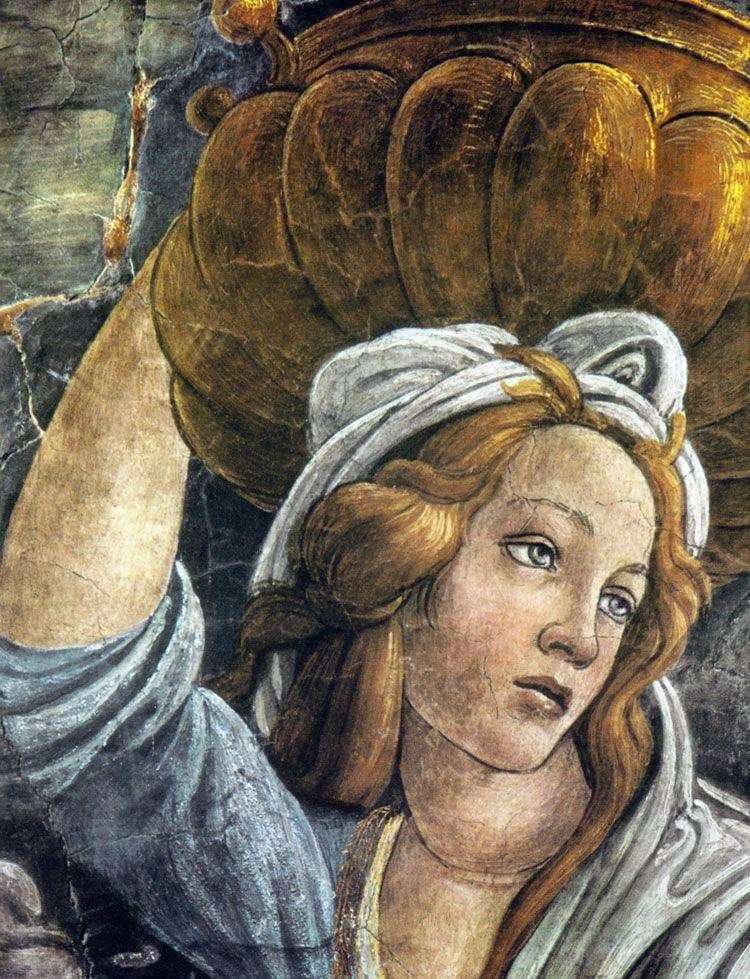 Daughter of Jethro (fragment) by Sandro Botticelli
Daughter of Jethro (fragment) by Sandro Botticelli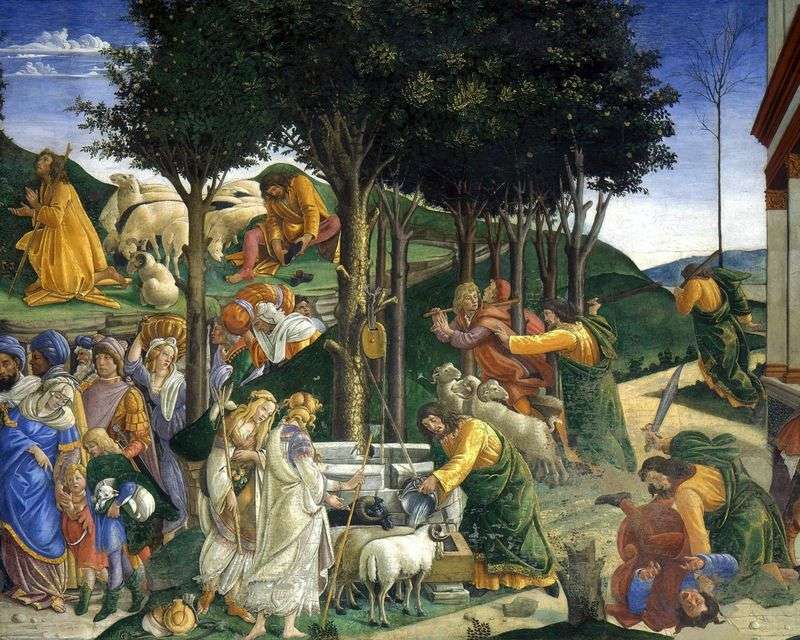 The Calling and Testing of Moses by Sandro Botticelli
The Calling and Testing of Moses by Sandro Botticelli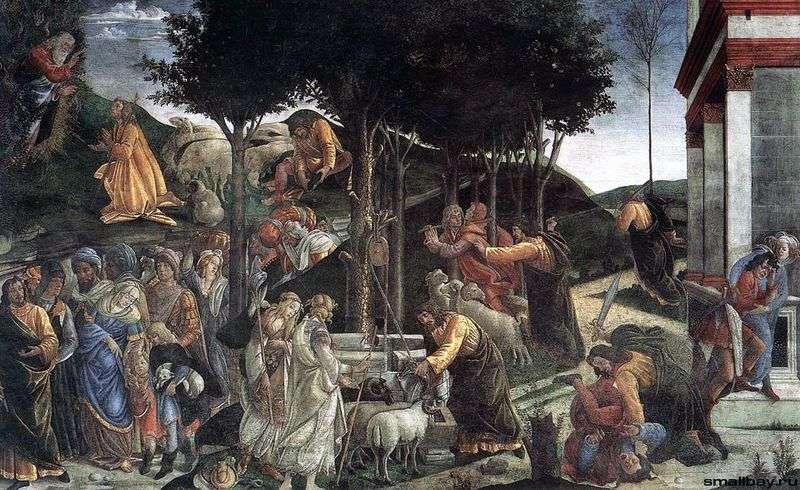 Scenes from the life of Moses (fresco) by Sandro Botticelli
Scenes from the life of Moses (fresco) by Sandro Botticelli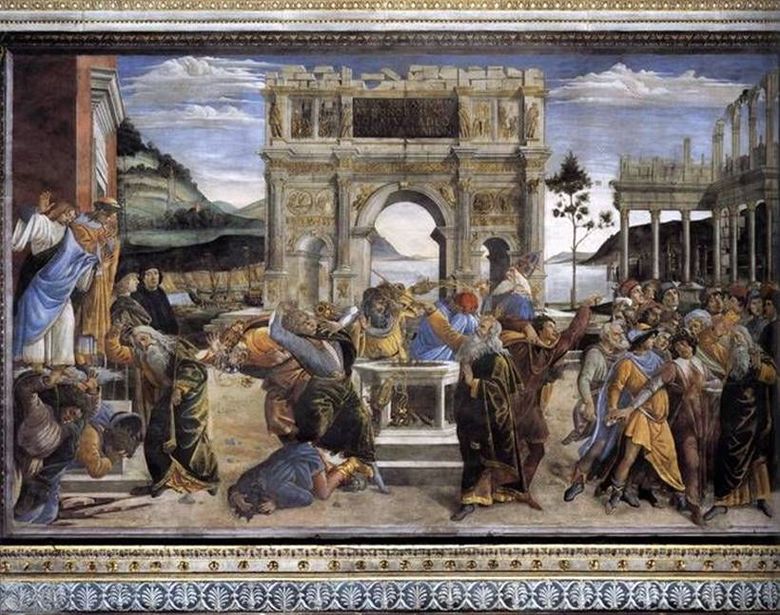 Punition de la Corée par Dathan et Abiron – Sandro Botticelli
Punition de la Corée par Dathan et Abiron – Sandro Botticelli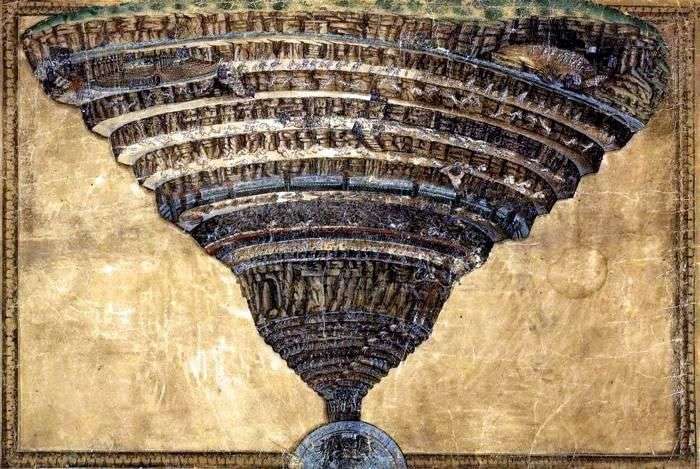 Hell by Sandro Botticelli
Hell by Sandro Botticelli St. Augustine the Blessed by Sandro Botticelli
St. Augustine the Blessed by Sandro Botticelli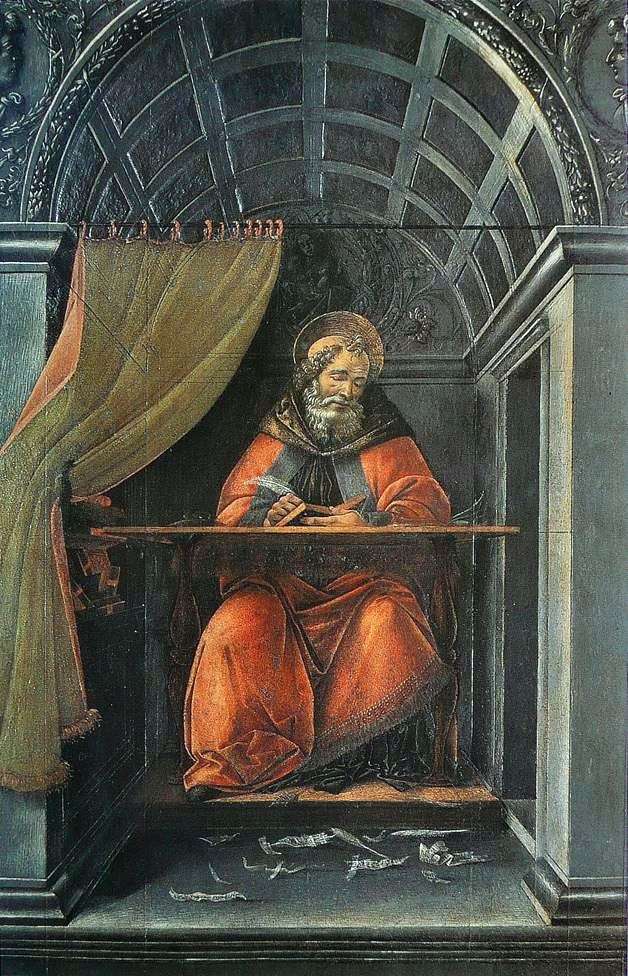 St. Augustine, writing in his cell by Sandro Botticelli
St. Augustine, writing in his cell by Sandro Botticelli